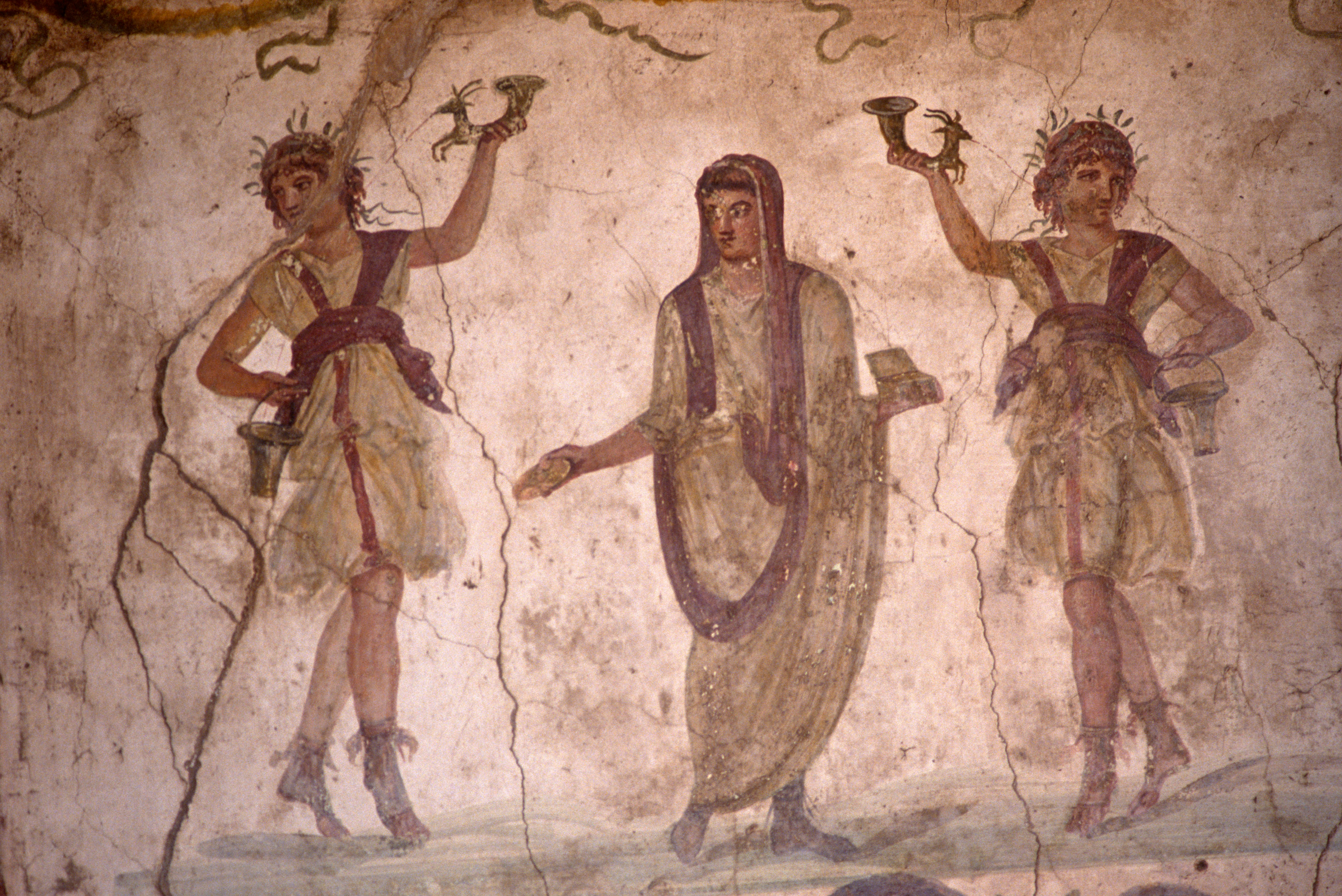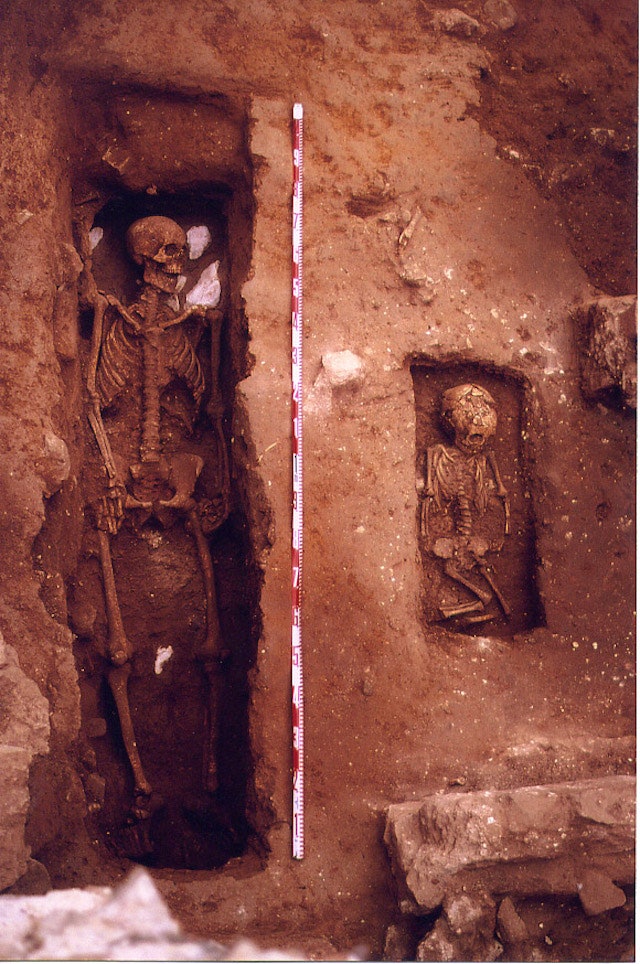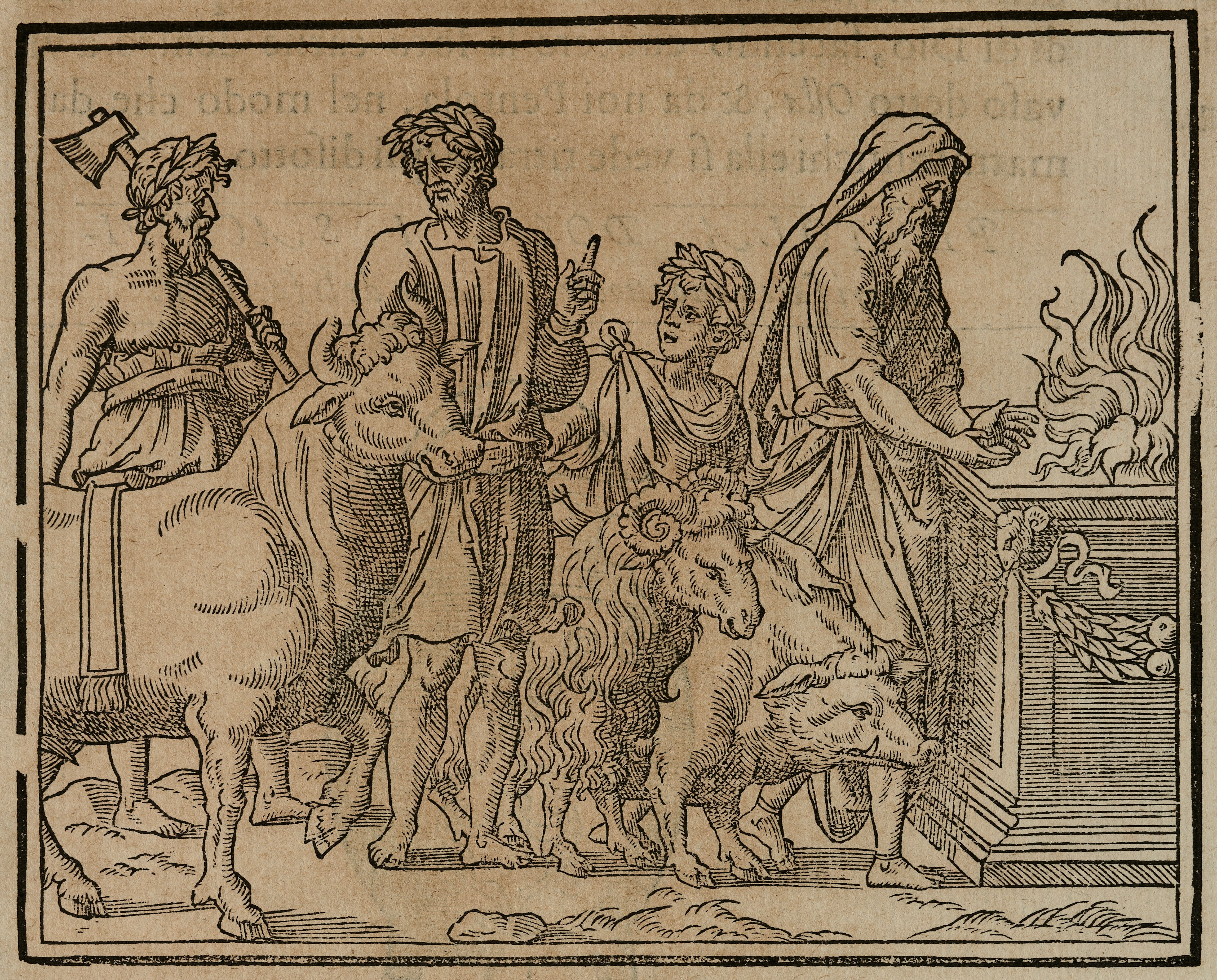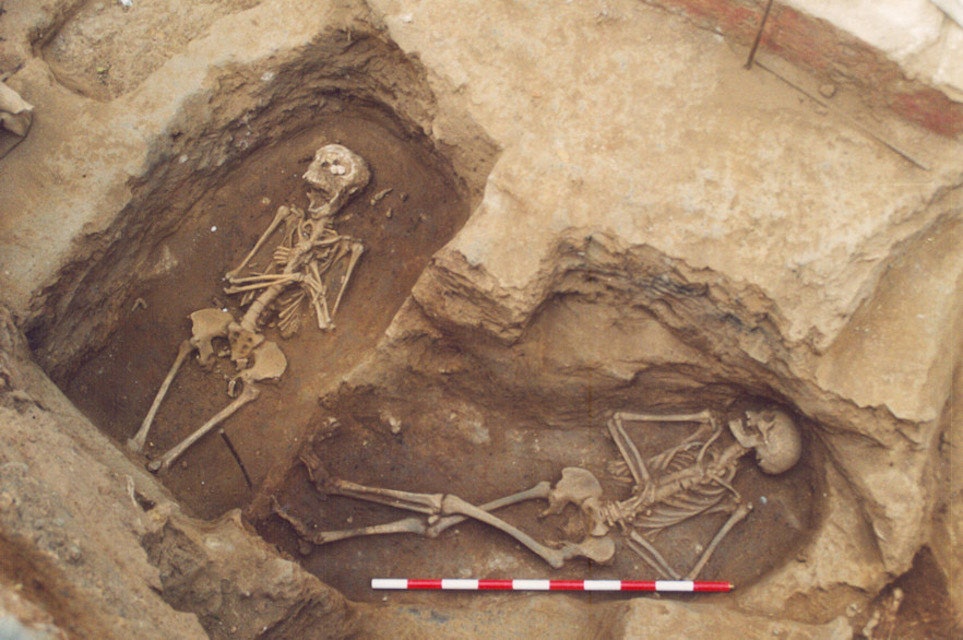
Some 1,700 years ago, a child in Roman-occupied Spain perished in infancy. Buried in a simple wooden coffin, the child went to the grave with customary offerings of meat to sustain it to the afterlife — a grave was not a grave unless there was a sacrifice to the goddess Ceres, according to some legislators.
By killing an animal and offering meat to the gods and to the deceased’s family — and placing it in the grave — the mourners symbolically closed the door on the space between the living and the dead. Some accounts suggest the sacrifice had to be a pig. But others, like the Roman poet Ovid, suggest otherwise. In one treatise, Ovid explains: “Good Ceres is content with little, if that little be but pure.” In this child’s case, Ceres was to be contented with an animal very few people will ever eat — a fox.
This strange discovery is just one among a trove of new details on ancient Roman life and death found at the necropolis Vila de Madrid, which today lies in the heart of the city of Barcelona. In a new study published this week in PLOS One, a trio of researchers reveal details of who the people interred there are, what they ate before they died, and how their loved ones consecrated their graves with food... and, mysteriously, why some were left with nothing to sustain their journey to the afterlife.
What’s new — The study delves deep into the remains of both humans and animals found at the Vila de Madrid, which was a necropolis outside of the ancient Roman city of Barcino (today, the excavated ruin sits adjacent to the Las Ramblas tourist hotspot in Barcelona for all to see). The researchers identified 41 human and 50 animal remains. They expected to find that all of the grave sites in the complex would yield some sign of an animal sacrifice or meat offering — preferably, so the histories seemed to say, a luxury food. It was, after all, supposedly the law. But the search found otherwise.

“Offerings, banquets, and sacrifices of animals were an important part of the funerary rituals, taking into account Roman written sources. Therefore, we expected to find more luxurious foods. And it has not been the case, quite the opposite,” say study authors Domingo Salazar-García and Lídia Colominas, both of whom are archaeologists based in Spain.
Alongside the rather indelectable fox offering, the team found bones belonging to roe deer, cows, sheep, chickens, and pigs, as well as dogs, rabbits, and horses, inside the graves — likely intentionally placed — and on the necropolis floor. Some animals may have died there out of chance, but many were likely sacrificial victims offered to the gods, as evidenced by the butcher marks on the bones.
“According to written sources the common thing was to take the entire animals or parts of the animals, kept together by the bones, to the site,” they add. Yet the analysis took another unexpected turn: Some graves held no animal bones at all.
“We can’t know for certain why some of the burials have no offerings,” Salazar-García and Colominas say.
But they do have some theories.
Unraveling the mystery — One important detail of this study is that the occupants of the Vila de Madrid were likely members of a collegium funeraticium, or funeral club — like a co-operative today, but for funerals. Paying into the club meant you got a proper burial with all the necessary rites taken care of even if you died penniless and unable to foot the bill. Killing pigs for Ceres was a luxury equivalent to you hosting a party and deciding to buy an entire organic, grass-fed sow to roast in the garden for your guests. Only some people can afford that.

“We must take into account that we are talking of a collegium funeraticium,” Salazar-García and Colominas say.
“Keeping in mind that we are looking at a collegium funeraticium — a burial place for the lowest economic classes and even slaves — it could possibly mean that the economic effort required for the banquets was not affordable for the family of the deceased,” they theorize.
“Of course, it can’t be ruled out that some might have simply been deposited at the cemetery with no social ceremony if unliked, considered he/she didn’t deserve it, or had no family members alive,” they say. “However, this is more of a speculative terrain.” And a bit bleak.
This may also explain why the infant was buried with a butchered fox leg. The fox may have been all the family of the child could manage to send with them to the grave.
“[The fox] would be possibly hunted and cooked, probably by a member of the family,” Salazar-García and Colominas say.
“The presence of wild animals in funerary contexts, although uncommon, is not rare. It has been suggested that the presence of these animals could be linked with symbolic offerings or, conversely, it could be a way to avoid slaughtering domestic animals and instead use wild animals as a kind of surrogate victim.”
Even the more choice animals brought to slaughter at the site were older specimens, the researchers discovered.
Indeed, the Roman poet Ovid in his thoughts on how forgiving Ceres was — a rarity for a Roman deity — goes on to suggest people shouldn’t trouble themselves with giving a luxury sacrifice:
“Ye attendants, with tucked up robes, take the knives away from the ox; let the ox plough; sacrifice the lazy sow. The axe should never smite the neck that fits the yoke; let him live and often labour in the hard soil.”
Anything was better than nothing — but for some, nothing had to do.
Why it matters — One of the key findings of this study lies within the bones themselves. The research team performed an analysis of the chemical isotopes in the humans’ bones to discover what kinds of foods they likely ate in the years before they died.

“Honestly, it was a surprise that the offerings were aligned to the daily diets,” Salazar-García and Colominas say.
They had thought there would be a clear difference, as funerals were an opportunity to go all out on the menu. But one theory that did pan out is that the men, women, and children at the site all show slightly different dietary habits — and this was reflected by and large in their grave offerings. In ancient Rome, women were subjugated. Part of their oppression manifested in their food: Women were expected to eat more grain and less meat than men, and children also tended to eat a more restricted diet than adult men, too.
Ultimately, though, the study sheds light on a class of Roman society that is often overlooked in historical accounts of these ancient people: The poor. History is written by the winners, and in social terms, these people were not winning.
“In the case of the study of human ancient lifestyles, the study of burials is key as it is the only way to study directly the actual subject of the studies: humans,” Salazar-García and Colominas say.
“The study of ancient lifestyles is important if we want to know how us humans lived and coped with daily life in the past,” they say. In turn, this can help modern humans “avoid past ‘mistakes’ that ended up in suffering of any kind by human individuals and societies,” they add. It can also reveal ideas and tools that enabled our ancestors to thrive despite the odds stacked against them.
“After all, knowing who we are today implies knowing how we were before, and helps project who we want to be in the future,” Salazar-García and Colominas say.
What’s next — Of the many mysterious elements the researchers found at Vila de Madrid, two skeletons stood out: A pair of males interred there show a very different isotopic profile to the others buried in the necropolis, suggesting they ate different food throughout their lives than the other folks. And that begs the question: Why?
“We would like to carry out strontium and oxygen isotope analysis on the study population to check if these individuals were indeed raised elsewhere or were local,” Salazar-García and Colominas say.
The team also wants to conduct analyses of any plant and other remains’ in the skeletons’ teeth to understand what plants they might have eaten, and other foods that wouldn’t show up so clearly in this first analysis.
Beyond that next step, they want to keep digging into other grave sites to try and glean more information about what other Romans did for their loved ones’ mortuary meals.
“This study is only a first milestone,” the researchers say.







